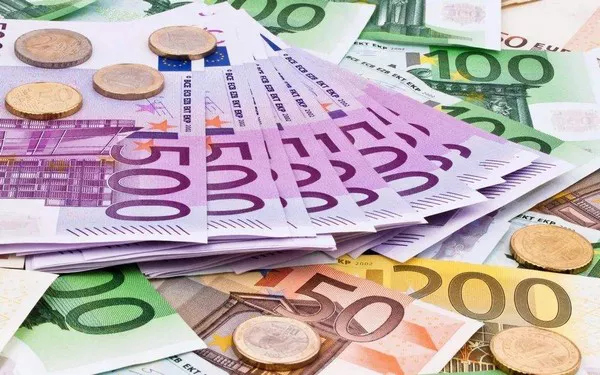In the realm of international finance, the exchange rate between currencies plays a pivotal role in determining the value of wealth held in different denominations. For individuals, businesses, and investors alike, understanding the conversion between currencies is essential for various transactions, investments, and financial planning. In this article, we delve into the intricacies of converting 1 million pounds sterling into US dollars. We will explore the current exchange rate, conversion calculation methods, factors influencing exchange rates, forecast and trends, financial advice, legal and tax implications, economic indicators, and the global market impact of such a conversion.
Current Exchange Rate:
As of the time of writing, the current exchange rate between the British pound sterling (GBP) and the United States dollar (USD) fluctuates due to the dynamic nature of the foreign exchange market. Exchange rates are subject to constant change influenced by various factors such as economic performance, geopolitical events, central bank policies, and market sentiment. It is imperative to consult reliable financial sources or utilize real-time currency conversion tools to obtain the most accurate and up-to-date exchange rate.
Conversion Calculation:
To calculate the value of 1 million pounds in US dollars, one must multiply the amount in pounds by the prevailing exchange rate. For instance, if the exchange rate is 1 GBP = 1.28 USD, then 1 million pounds would be equivalent to 1280000 US dollars. The conversion formula is straightforward: Amount in GBP x Exchange rate = Amount in USD.
See Also: 50,000 Pounds in US Dollars
Factors Influencing Exchange Rates:
Several factors influence exchange rates, ranging from economic indicators to geopolitical events. Some key determinants include:
Interest Rates: Higher interest rates in a country tend to attract foreign capital, increasing demand for its currency and consequently strengthening its exchange rate.
Economic Performance: Strong economic fundamentals, such as robust GDP growth, low unemployment, and stable inflation, often lead to currency appreciation.
Political Stability: Countries with stable political environments generally exhibit more favorable exchange rate conditions due to increased investor confidence.
Trade Balance: A country’s trade balance, reflecting the difference between exports and imports, can impact its currency value. Persistent trade deficits may lead to currency depreciation.
Market Sentiment: Speculative trading activities and market perceptions can influence short-term fluctuations in exchange rates.
Forecast and Trends:
Forecasting exchange rate movements with absolute certainty is inherently challenging due to the multitude of variables at play. However, financial institutions, central banks, and economists utilize various analytical models and data to provide insights into potential trends. Forecasting methods may include technical analysis, fundamental analysis, and econometric modeling. It is essential to interpret forecasts cautiously, considering the inherent uncertainties and risks associated with currency markets.
Financial Advice:
When considering currency conversion involving substantial sums such as 1 million pounds, seeking professional financial advice is advisable. Financial advisors can offer tailored guidance based on individual circumstances, risk tolerance, and investment objectives. Factors such as transaction costs, timing of conversion, and potential currency fluctuations should be carefully evaluated to optimize the outcome of the conversion.
Legal and Tax Implications:
Converting 1 million pounds into US dollars may entail legal and tax considerations depending on the jurisdiction and the purpose of the transaction. It is essential to comply with relevant regulatory requirements and seek legal advice to ensure adherence to applicable laws and regulations. Additionally, tax implications, including capital gains tax or foreign exchange gains, may arise from currency conversions, necessitating thorough tax planning and compliance.
See Also: 70 Pounds in Dollars
Economic Indicators:
Monitoring key economic indicators can provide valuable insights into currency market trends and potential exchange rate movements. Some essential indicators to consider include:
GDP Growth: Economic growth rates impact currency values, with stronger growth typically associated with currency appreciation.
Inflation Rate: Central banks often adjust interest rates in response to inflation levels, influencing currency values.
Employment Data: Unemployment rates and labor market conditions can affect consumer spending, investment, and overall economic performance, thereby influencing exchange rates.
Central Bank Policies: Monetary policy decisions, including interest rate changes and quantitative easing measures, have significant implications for currency markets.
Global Market Impact:
The conversion of 1 million pounds into US dollars can have broader implications beyond individual transactions. Large-scale currency conversions may impact foreign exchange markets, potentially affecting exchange rates and market liquidity. Market participants, including central banks, financial institutions, and multinational corporations, closely monitor such transactions for their implications on global financial stability and currency market dynamics.
Conclusion:
In conclusion, understanding the value of 1 million pounds in dollars requires a comprehensive analysis of exchange rates, conversion methods, influencing factors, forecast trends, financial considerations, legal and tax implications, economic indicators, and global market dynamics. Currency conversion decisions should be informed by careful assessment of risks, objectives, and market conditions. Seeking professional advice and staying informed about developments in currency markets are essential for making informed financial decisions. Ultimately, the value of wealth transcends mere numbers, reflecting the broader economic, social, and geopolitical forces shaping the global financial landscape.
Related Topics:


























